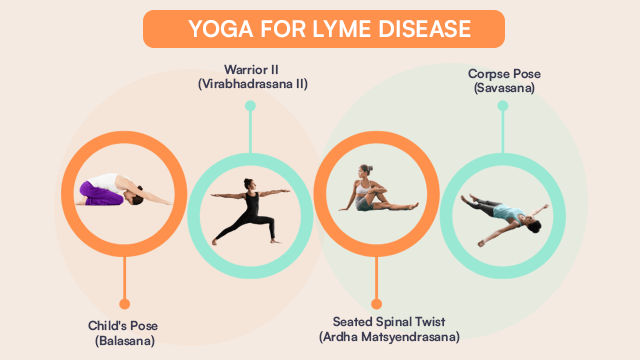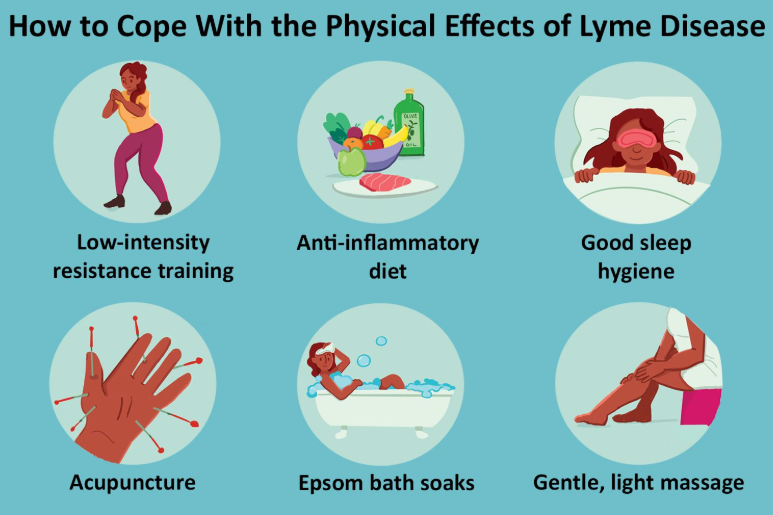Physical Therapy for Lyme Disease - Induced Joint Pain


Living with Lyme disease can be tough, especially when it leads to joint pain that makes everyday tasks harder. But there’s hope—physical therapy for the Lyme offers a way to ease the pain, get your strength back, and move more freely. In this blog, we’ll see in detail how physical therapy helps for lyme-induced joint pain.
What Does Physical Therapy for Lyme-Induced Joint Pain Do?
Physical therapy is all about helping your joints feel and work better. Physical therapy treats pain, muscle weakness, and stiffness with exercises and hands-on techniques designed just for you.
To address your specific symptoms therapists create personalized plans . They may guide with simple techniques like gentle movements and stretches to improve flexibility, strengthen muscles and ease pain. This therapy helps in managing the pain and also enhances your flexibility to do the regular activities. Over time, therapy helps you regain confidence and independence, step by step.
How Does Physical Therapy for Lyme Improve Movement?
Physical therapy improves movement by loosening up the stiff joints and carrying out the daily tasks. Therapist carefully guides you with exercises that are personalized for you to reduce pain, make your joints loosen up and stretch tight muscles.
For example, you might work on gentle stretches to improve flexibility or use low-impact activities like swimming or cycling to strengthen your muscles without putting pressure on your joints. Your therapist may use joint mobilization, a hands-on technique to help your joints move better. These small but consistent efforts can make a big difference in how you feel day to day.
What Exercises Help With Joint Pain Relief from Lyme?

Gentle, low-impact exercises are the best way to ease joint pain from Lyme. Gentle exercises like yoga, walking, and even swimming can help you feel better.
Yoga is a great way to improve your balance, on the other hand swimming gives you a full-body workout without straining your joints. Walking, even for a few minutes, improves blood flow and keeps your joints active. Resistance bands, or other strength-building exercises, focus on making the muscles around your joints stronger so they can give more support. A mix of these exercises, tailored to your needs, can help you move more freely and with less pain.
Why Start Rehabilitation for Lyme Disease Early?
Starting therapy early is one of the best ways to prevent long-term joint problems from Lyme disease. The sooner you address joint pain and stiffness, the better your chances of recovering fully.
When therapy is delayed, joint damage can become worse, leading to more pain and less mobility. Early physical therapy stops this from happening by reducing inflammation, improving flexibility, and strengthening muscles right away. It also helps you avoid unhealthy positional patterns and stay active.
Can Manual Therapy Really Help With Lyme-Induced Joint Pain?
Yes, manual therapy is an important part of treating Lyme-induced joint pain. This therapy can enhance your joint movement and reduce pain.
Therapists can combine techniques like gentle joint movement and massages to relax tight muscles and improve blood flow that reduces inflammation. Many people find that manual therapy not only helps right away but also makes their exercise routines more effective by loosening up their joints and muscles beforehand.
How Long Does Physical Therapy for Lyme Take to Work?
Most people start to feel better within 4–6 weeks of regular physical therapy. How quickly you improve depends on how severe your joint pain is and how consistent you are with therapy.
Your therapist will track your progress and adjust your plan as needed. While some improvements come quickly, full recovery may take several months, especially if your symptoms have been around for a while. The key is sticking with it—every session brings you closer to feeling better.

Does Diet Help With Rehabilitation for Lyme Disease?
Yes, your diet helps with rehabilitation for lyme disease. Certain foods that are rich in antioxidants can reduce inflammation and help your joints heal faster.
For instance, salmon fish which are enriched in omega-3 fatty acids, fight inflammation. Leafy vegetables like spinach provide necessary vitamins that support joint health and bone. Fruits like berries are packed with antioxidants that help your body repair itself. On the other hand, avoiding sugary and processed foods can prevent inflammation from getting worse. Combining a healthy nutritious diet and physical therapy exercise helps your body stay stronger and recover fast.
Wrapping It Up
Living with Lyme-induced joint pain is challenging, but you don’t have to go through it alone. With the right physical therapy for the Lyme, you can ease your pain, regain your strength, and get back to the things you enjoy.
Combining physical therapy with healthy habits, like eating healthy nutritious food and staying active, for the best results. If you’re ready to take that first step, reach out to a physical therapist today—they’re here to help you feel better and move forward.
